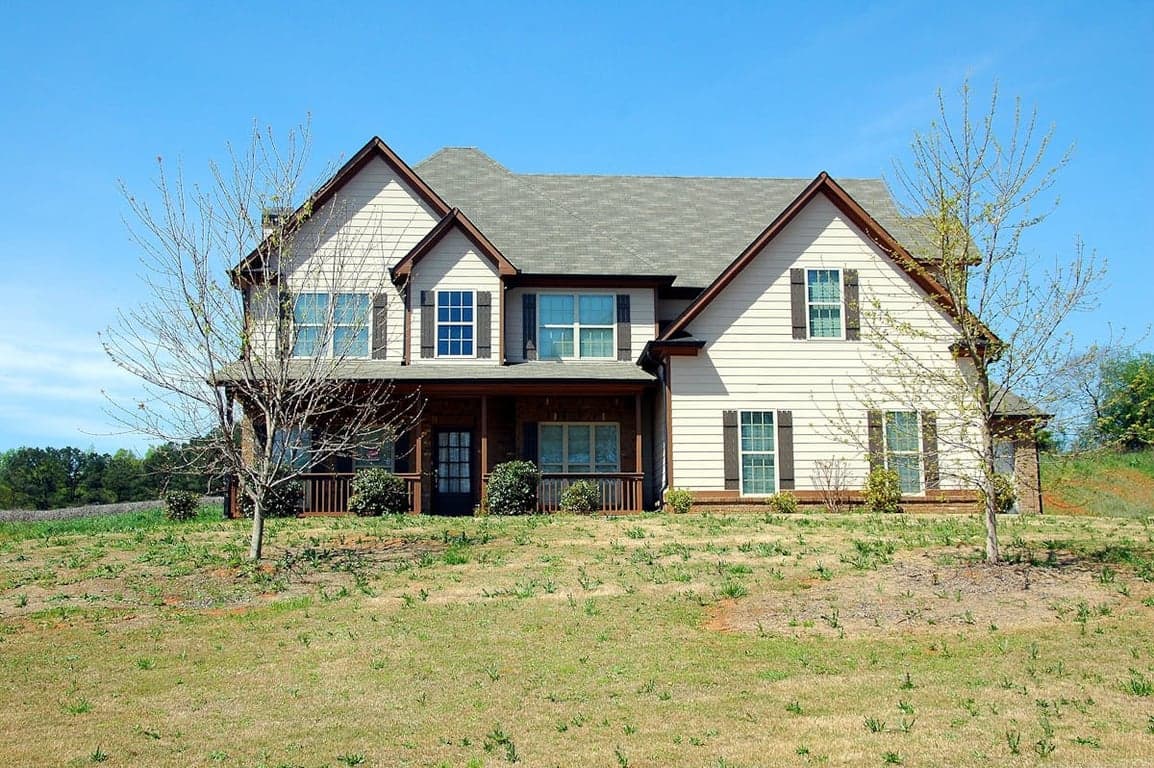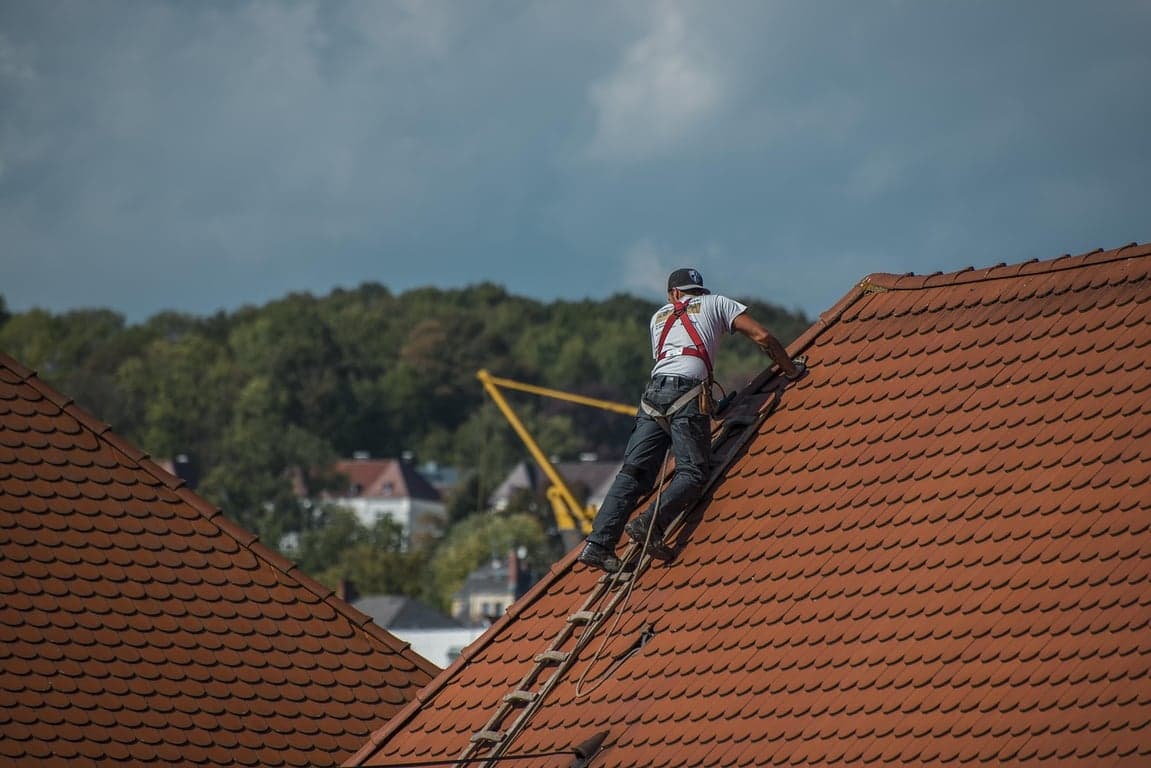Roof Repair vs. Replacement
TL;DR – Should You Repair or Replace Your Roof?
If your roof has a minor issue like a few missing shingles or a small leak and it’s under 15 years old, a repair is usually fine. But if it’s older, leaking in multiple areas, or you've had to patch it more than once, replacement may save you more money long-term. Don’t wait until it leaks—get a proper inspection to avoid bigger problems later.

Every Homeowner Asks This Eventually…
It starts with a question:
“Should I repair my roof—or is it time to replace the whole thing?”
Maybe you spotted a shingle lying in the yard. Or there’s a suspicious water stain in the ceiling. Maybe a roofer told you the whole thing’s “shot”—but you’re not sure you believe them.
You’re not alone. We talk to homeowners every week who feel stuck between patching the problem or biting the bullet and replacing their entire roof. And with roofing being one of the least-trusted industries? Yeah, we get the hesitation.
Here’s what you actually need to know.
Roof Repairs: When a Small Fix Is the Right Move
Roof repairs make sense when the issue is isolated and the roof is still in decent shape. A missing shingle after a storm? A cracked rubber boot around a vent? These are the kinds of problems we fix in a single visit.
Repairs are quick, cost-effective, and can extend the life of your roof—especially if it’s under 15 years old and otherwise in good condition. Some homeowners worry that “one problem means the whole roof is bad,” but that’s not always true.
We once had a client in Bensalem with a few shingles that had curled from a cold snap. No leaks, no sagging, no granule loss. She was told by another company to replace the entire roof. Our inspection showed a simple fix would do the trick. Three years later, that roof is still solid—and she saved over $9,000.
When It’s Time to Replace the Roof
On the flip side, repairs can only take you so far. A roof that’s over 20 years old and showing signs of wear across multiple areas isn’t something you want to keep patching.
You might start to notice sagging spots, dark streaks, or granules piling up in your gutters. Maybe you’ve already repaired the same section more than once. At that point, a full replacement isn’t just the better option—it’s often the cheaper one over time.
Think of it like this: if you’re spending $500–$1,000 on repairs every year, how long will it take before you’ve paid for a brand-new roof?
Worse, waiting too long to replace a roof can lead to hidden damage—rotting wood, ruined insulation, or mold in your attic. A leaky roof doesn’t just stay on the roof. It spreads downward, quietly and expensively.
What About Reroofing? Is That Cheaper?
Some contractors will offer to “reroof” your home—laying new shingles over the old ones. In some cases, this can be a short-term option, especially if your existing roof is still flat and you haven’t had leaks.
But be careful:
Many local codes only allow one reroof layer
You won’t be able to inspect the wood deck underneath
It usually voids long-term warranties
At Paragon Exterior, we prefer doing it right the first time. If your roof is worn out, we recommend full tear-offs so we can inspect and rebuild everything with confidence.
“It’s Not Leaking, So It’s Fine”… Right?
This mindset is common—and dangerous. We’ve had homeowners tell us, “It’s not leaking, so I figured it was fine,” only to discover mold growing under the decking or water pooling behind the gutters.
Leaks are a lagging indicator. By the time water shows up on your ceiling, the damage has already been done. That’s why routine inspections matter—and why we offer them for free. You deserve to know what’s going on with your roof, without someone pushing you into a replacement before it’s necessary.
How Long Does a Roof Last?
Here’s what you can expect based on your roof type:
3-tab asphalt shingles: 15–20 years
Architectural shingles: 25–30 years
Metal roofing: 40–70 years
EPDM flat roofs: 15–25 years
And here’s a pattern we’ve seen across thousands of homes:
Years 0–10: Almost no issues
Years 10–15: Occasional minor repairs (vent boots, flashing)
Years 15–25: Time to seriously evaluate for replacement
But keep in mind—this depends on ventilation, installation quality, and storm exposure. A “25-year roof” may only last 15-20 years if improperly installed.
How to Make the Smart Choice
Here’s what we recommend:
Schedule a proper inspection.
Photos, honest feedback, and no pressure.Compare costs.
Not just repair vs. replace—but also long-term cost per year.Ask questions.
Is the damage cosmetic or structural? Localized or widespread? Are you planning to move soon?
Our team gives you all the info, without the sales pitch. We’ve built our reputation on transparency and straight answers.

Why Homeowners Trust Paragon Exterior
We’re not here to sell you a roof. We’re here to protect your home.
Detailed photo inspections
Clear communication—no jargon or scare tactics
Skilled crews, not subcontracted
Financing available for all budgets
Repairs, replacements, and warranties that stand up
We proudly serve Pennsylvania, New Jersey, and Delaware with integrity.
FAQ
How do you know whether to repair, patch, or replace your roof?
It depends on the extent and location of the damage, as well as the age of the roof. If the damage is small and isolated, like a missing shingle or minor leak, a patch or repair will likely be enough. But if your roof is older (15+ years), leaking in multiple spots, or has widespread shingle issues, it's time to consider a full replacement.
Is reroofing the same as replacing a roof?
Not exactly. Reroofing means adding a new layer of shingles over the existing roof—no tear-off involved. Full replacement means removing everything down to the decking and installing a brand-new roofing system. Reroofing can be cheaper but isn’t always code-compliant and may void warranties.
Can you patch a roof instead of replacing it?
Yes, you can patch specific areas of a roof if the damage is minimal and the rest of the roof is in good shape. Just know that patching is usually a short-term fix. It’s best for roofs that are otherwise in solid condition and under 15 years old.
Is $30,000 too much for a roof?
It depends on your roof size, material, location, and what’s included. For large or complex homes, especially with metal or designer shingles, $30,000 might be normal. That said, most asphalt shingle roof replacements range from $8,000–$18,000 in the Pennsylvania–New Jersey–Delaware region. Always get multiple quotes.
Is it cheaper to repair or replace a roof?
Repairing is cheaper in the short term. But if your roof needs frequent repairs, a full replacement may be more cost-effective in the long run. Think about cost-per-year: A $1,200 repair that lasts 2 years vs. a $12,000 roof that lasts 25 years.
How long does roof patching last?
A well-done patch on a solid roof can last 3–5 years or more. But on an aging or poorly ventilated roof, a patch may only buy you a short amount of time. It’s a temporary fix—not a reset button.
Not Sure Where to Start?
That’s okay. You don’t have to figure it all out on your own.
Book a free inspection with Paragon Exterior and get the real answer—whether you need a quick fix or it’s finally time for a new roof.
Related Posts
Reroofing vs Roof Replacement: What’s the Smarter Move for Your Home?
Compare reroofing vs roof replacement with cost breakdowns, pros and cons, lifespan, and expert advice. Make the right call for your home in 2025.
Get Your Free Estimate Today
Paragon Exterior is revolutionizing the roofing and siding industry. We prioritize quality, trust, and complete transparency — and we’re proud to declare it: the outdated, frustrating aspects of this field are being discarded. At Paragon, we enhance everything that truly matters: communication, craftsmanship, and care. Our mission is straightforward — to be the ideal partner for homeowners before, during, and long after the project is finished. This is how roofing and siding should be: comfortable, honest, and stress-free.


